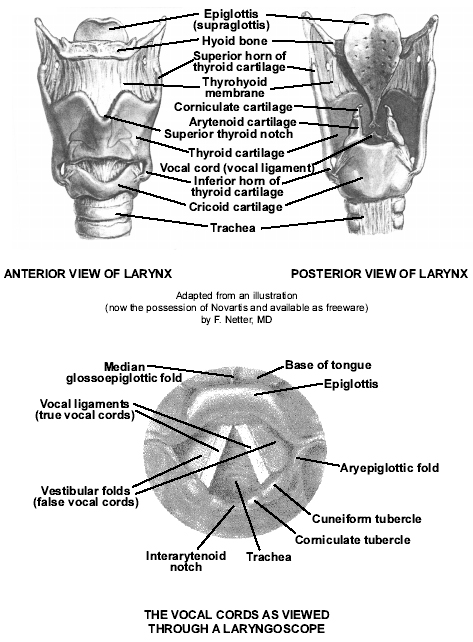Head and Neck Cancer
Can I Get Social Security Disability Benefits for Head and Neck Cancer?
- About Head and Neck Cancer and Disability
- How to Get Disability Benefits for Head and Neck Cancer by Meeting a Listing
- Residual Functional Capacity Assessment for Head and Neck Cancer
- Getting Your Doctor’s Medical Opinion About What You Can Still Do
If you have head and neck cancer, Social Security disability benefits may be available. To determine whether you are disabled by your head and neck cancer, the Social Security Administration first considers whether it is severe enough to meet or equal a listing at Step 3 of the Sequential Evaluation Process. See How to Get Disability Benefits for Head and Neck Cancer by Meeting a Listing. If you meet or equal a listing because of your head and neck cancer, you are considered disabled. If your head and neck cancer is not severe enough to equal or meet a listing, the Social Security Administration must assess your residual functional capacity (RFC) (the work you can still do, despite the head and neck cancer), to determine whether you qualify for disability benefits at Step 4 and Step 5 of the Sequential Evaluation Process.
About Head and Neck Cancer and Disability
Cancers of the head and neck usually occur in people over age 40 and number more than 50,000 per year with four times the frequency in males compared to females. Smoking, alcohol, and chewing tobacco increase the risk. The mouth and pharynx are lined with squamous epithelial cells and most head and neck cancers arise from malignant transformation of these cells to produce squamous cell carcinoma (SCC).
There are a variety of stages of head and neck cancer, with Stage IVB cancers having the worst prognosis. Tumors which are larger, invading blood vessels, more malignant, and in the areas more richly served by lymphatics are more likely to produce lymph node metastases (spread of cancer from its origin to another location in the body). Involved lymph nodes in the neck are local metastasis, but more distant spread can occur. The majority of the cases of head and neck cancer seen by are SCC related to use of tobacco products, and these most frequently have metastasized to the lung.
SCC that is detected early as a very small lesion with no metastasis has the best chance of survival, but this is often not the case. Overall survival rate for SCC of the head and neck is only 33% at 5 years, and only 17% if cancer was left behind at the surgical margins. However, there are so many locations, tumor sizes and degrees of malignancy of SCC in the head and neck with different prognoses that it is better not to rely on such broad numbers in evaluating a particular case. Nevertheless, these numbers provide the important perspective that SCC of the head and neck is often a deadly entity. See Residual Functional Capacity Assessment for Head and Neck Cancer.

Oral Cavity
Forms of Head and Neck Cancer
In addition to squamous cell carcinoma, lymphomas, lymphoepitheliomas, small cell cancers, and others may occur, although these are less common.
A frequent form of head and neck cancer included but not specifically noted by the listing is SCC of the larynx caused by a history of cigarette smoking. All treatment for laryngeal cancer is either surgical or with radiation. If there is in situ (confined to the cells in the tissue layer of origin, without having spread to surrounding tissues) cancer of the vocal cords themselves, the cords can be surgically stripped, but recurrence is frequent. Such stripping is not radical surgery as contemplated by the SSA’s listing. Repetition of the procedure may lead to thickening and hoarseness of the voice, but not inability to speak. Radiation of early vocal cord lesions is the most common treatment, and requires about 6 weeks. Carbon dioxide lasers are sometimes used to treat very early malignant and benign lesions of the vocal cords. Hemilaryngectomy may be required for control after radiation failure. There is about an 86% 3-year survival without disease after such surgery. Advanced vocal cord lesions cannot effectively be treated with radiation. Hemilaryngectomy is usually not possible either, and in such instances total laryngectomy is required. The larynx is completely removed and a permanent tracheostomy is placed for breathing. Various means of producing artificial speech can then be attempted. Vocal cord cancer treated with total laryngectomy has a 3 year overall survival rate of about 70%.

Pharynx
Head and Neck Cancer Treatment
Head and neck cancers are treated with various combinations of surgery, radiation, and chemotherapy.
Chemotherapeutic drugs for head and neck cancer when used may include methotrexate, cisplatin (Platinol), bleomycin (Blenoxane), cyclophosphamide (Cytoxan), vinblastine (Velban), doxorubicin (Adriamycin) and others. These agents have varying degrees of side-effects, depending on the individual response, duration of treatment, and dose used. Nausea and malaise are the most frequent problems. Anemia induced by bone marrow suppression can add to the weakness induced by drugs.
Continue to How to Get Disability Benefits for Head and Neck Cancer by Meeting a Listing.
